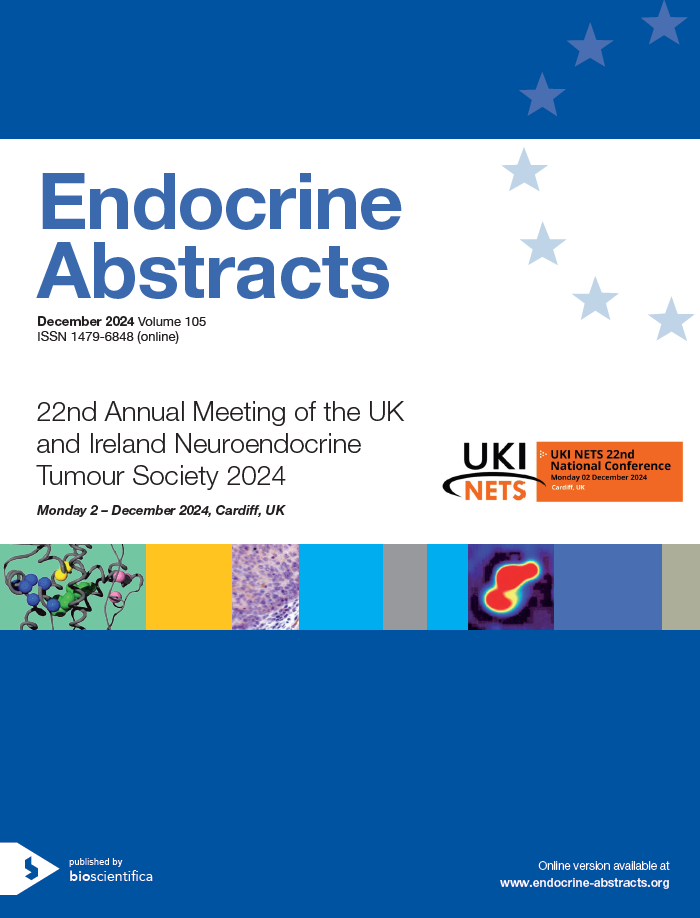22nd Annual Meeting of the UK and Ireland Neuroendocrine Tumour Society 2024
Oral Communications
ea0105oc1 | Oral Communications | UKINETS2024
68Ga68 DOTATATE imaging on a whole-body PET/CT scanner & optimising injected activity
Navalkissoor Shaunak , Chowdhury Adnan , Santillan Noel , Ferreira Bruno , Caplin Martyn , Gnanasegaran Gopinath
ea0105oc2 | Oral Communications | UKINETS2024
The biopsychosocial impact of pancreatic enzyme replacement therapy shortages
Jervis Nicola , Ellis Catherine
ea0105oc3 | Oral Communications | UKINETS2024
Emergency and routine presentation of neuroendocrine neoplasia in England: determinants of diagnosis and survival outcomes
Line El Asmar Marie , Mortagy Mohamed , White Benjamin , Chandrakumaran Kandiah , Burns Dan , Ramage John
ea0105oc4 | Oral Communications | UKINETS2024
Clustering of gastroenteropancreatic neuroendocrine neoplasms (GEP-NEN) using machine learning (ML) and comparison with Tumour, Node, Metastasis (TNM) staging: a retrospective, population-based study using Surveillance, Epidemiology, and end results (SEER)
Mortagy Mohamed , El Asmar Marie Line , White Benjamin E , Chandrakumaran Kandiah , Ramage John
ea0105oc5 | Oral Communications | UKINETS2024
Selective internal radiotherapy (SIRT) versus hepatic artery embolization (HAE) for the treatment of neuroendocrine liver metastases
Lynch Calum , Tingle Samuel , Kourounis Georgios , Figueiredo Rodrigo , French Jeremy , Littler Peter , Manas Derek , Pandanaboyana Sanjay , Priona Georgia , Reicher John , Takkar Rohan , Wilson Colin , Robinson Stuart




